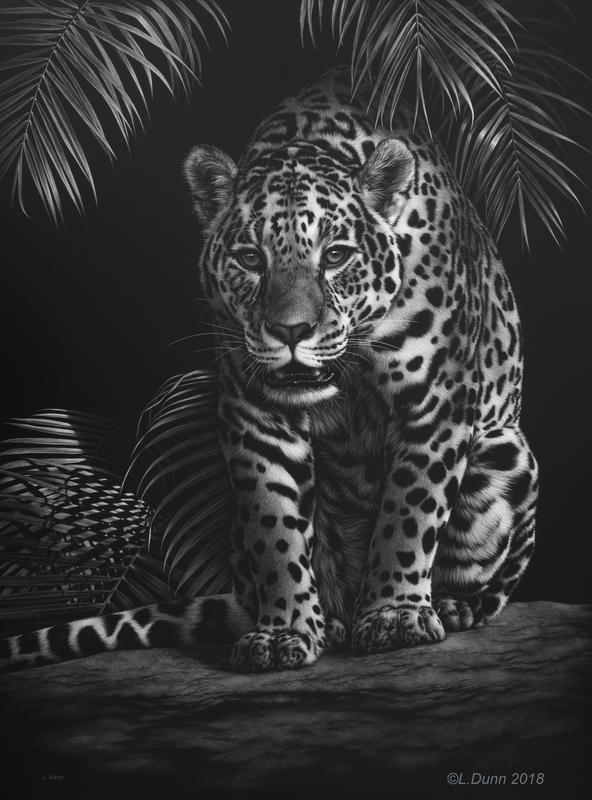LORI DUNN SCRATCHBOARD ART
promoting conservation through artistic efforts
Last Light
18 x 24
SOLD
It may be surprising to know that the jaguar (Panthera onca) is the 3rd strongest cat in the world, but if you have ever seen one at a zoo, or are lucky enough to have seen a wild one, it's easier to understand. Jaguars are not built for speed and agility, but rather for sheer muscle and power. With a stocky frame, huge head, and massive paws, they are capable of killing the most formidable of prey, including wild boar and even large crocodilians. This unique strength doesn't end there. The jaguar also has the most powerful bite of all the large cats. Over 1300 pounds per square inch of force is exerted via their jaws, beating out lions and tigers in this respect. They can also open their jaws wider than any other cat species. These abilities allow them to kill with a single bite to the skull of an animal, and in fact, this is their preferred method of subduing prey. A jaguar kill can be identified by the holes made in the skull of an animal from this extreme pressure.
Jaguars range through the rain forests of South and Central America, northward into Mexico and occasionally into the US, primarily Texas, Arizona and New Mexico. Thought to have been extirpated from the US in the early 1900's, little was done to determine if this was in fact the case, and with the onset of the Endangered Species Act in the 1970's they were not even considered for inclusion on the list. Scientists now know that small numbers of jaguars do still show up in US territory, whether migrating from Mexico, or existing as established individuals is not entirely clear. They are, however, now afforded protection as a Federally endangered species.
The demise of this species can be attributed primarily to habitat loss, especially in regards to their former US range where ranching took over most of their preferred habitat. Preying occasionally on livestock has not made an easy case for their survival among farmers, although conservation organizations in Central and South America are now working with local farmers to offset depredation with financial incentives. The most pressing threat to the survival and growth of jaguar populations in the US is the fragmentation consequences of the proposed United States–Mexico border wall. Conservationists believe that jaguars occurring in the US represent a small population at the northern most edge of their range. Breeding behavior has not been documented in US jaguars, and the belief is that most reproduction of this population still occurs in Mexico. Cutting off jaguars from migrating between territories would spell doom for those individuals occupying habitat in the US, through loss of genetic diversity.
Although primarily nocturnal in habits, they do often hunt in the last hours of daylight. I've depicted this individual surveying its surroundings as the last rays of sun sink below the horizon.
